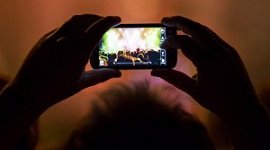
THE BLACK WAVE
What happens in a community when it is overwhelmed by natural disaster and the cameras have moved on?
Disasters come and go for those who consume news from afar. The Church responds with prayers which are well intentioned and effective but not usually enduring. Our thinking is channelled by the media which is addicted to the latest crisis and our empathy shifts with it. This habit feels bewildering and can lead to passivity and despair when we address too many issues in our intercessions. It is so hard to pray about so many different problems at once and last month’s crisis is quickly filed at the back of the cabinet to make room for something new. True intercession begins at the throne of God, not on our social media news feed, however helpful this may be as a prompt, which calls for a quiet, responsive heart that listens to the intuitive whispers of the Spirit.
When a natural disaster happens somewhere else, the news cycle follows a familiar pattern: the news alert on the phone, the numbers of dead in low figures which begin to climb, smartphone footage of the event, reporters arriving on the scene, coverage of the rescue effort, the unbearable pain of those who lose many family members at once, remarkable tales of survivors long after hope has been extinguished, the Disasters Emergency Committee appeal. By the time re-construction is beginning, we have long since moved on.
But what happens in a community when it is overwhelmed by natural disaster? Richard Lloyd Parry has provided us with one of the most insightful accounts we could ever expect to read in Ghosts of the Tsunami (Penguin, 2017). As a resident of Tokyo, he experienced the massive earthquake which precipitated one of Japan’s worst ever tsunamis. The death toll of nearly 19,000 in March 2011 was caused almost entirely by the sea, such is Japan’s resilience in an earthquake. Global attention was focussed on the damaged Fukushima nuclear plant, as fears of a Chernobyl-style meltdown grew. But lasting Japanese attention has been elsewhere, most especially on Okawa Primary School, where almost every child perished because its teachers made bad decisions over their evacuation. The deaths were preventable, and a court case ensued to try and prove it was negligent.
Lloyd Parry’s gift for empathy and for prose make this one of the most compelling of books. He rejects exaggeration or prurience and becomes intimate with the bereaved in the time afterwards; explains how disasters unfold and the ways in which our prayers might be needed years after the event. Media platitudes about the community coming together in the aftermath seem lazy and ill-judged. The picture is more mixed: relationships form and break, break and form in a complicated pattern that anyone who has followed a community after a trauma would recognise. The effects of a specific culture on the experience of grief, loss and dispossession are huge. Here, Japanese people’s renowned stoicism and embrace of social order and conventional manners shaped responses. When some families of the Okawa children challenged the official, deceptive version of the school’s evacuation protocols, it breached a culture of deference that an individualistic, rights-based society would not recognise.
Other cultural and spiritual norms came to the fore. Ancestor shrines are common in Japan, especially in the eastern coastal regions hit by the wave. These were washed away, leaving people bereft. The concept of parents being orphaned emerged from this practice. Where a family’s children perished, there would be no-one left to pray for the parents’ souls after their own deaths.
One of the more disturbing features of the calamity was the prevalence of ghosts and spirits, which are an enduring feature of folk-lore. Countless people saw ghosts and many people were exorcised of spirits which spoke in alarming terms about a half-life between the living and the dead. Mediums were consulted in large numbers and the voices of the dead were summoned, sometimes speaking with a naturalness and specificity about the dead that brought comfort to many but which readers from different cultures or faiths may be distressed by.
These are the contours of a disaster after media lenses have left the scene.
There are many accounts of the wave itself. Hokusai’s painting, The Great Wave off Kanagawa colours our perception. A tsunami is a black wave of mud and the appalling detritus of trees, concrete, cars and houses that it rips up in its wake and with which it cumulatively smashes everything in its path. Lloyd Parry describes it thus:
The tsunami was a thing of a different order, darker, stranger, massively more powerful and violent, without kindness or cruelty, beauty or ugliness, wholly alien. It was the sea coming onto land, the ocean itself picking up its feet and charging at you with a roar in its throat.
The spiritual questions are all-consuming too.
In Psalm 46 it says:
God is our refuge and strength…though the mountains shake in the heart of the sea; though its waters roar and foam.
It is in the dissonance between this promise and the description of the tsunami above that human responses are made and attitudes to God are lastingly formed by those who stand in the path of disaster. We probably owe them more than a couple of Sundays of prayer as they occupy this space.
POPULAR ARTICLES

Obama's Covert Wars
The use of drones is going to change warfare out of all recognition in the next decades.

Through A Glass Starkly
Images of traumatic incidents caught on mobile phone can be put to remarkable effect.

What Are British Values?
Is there a British identity and if so, what has shaped the values and institutions that form it?


